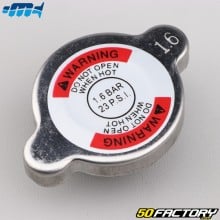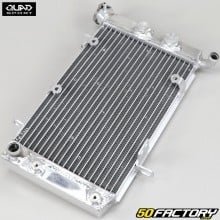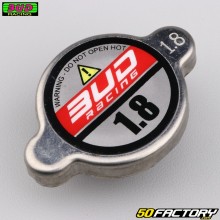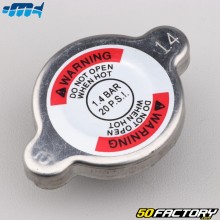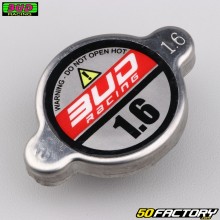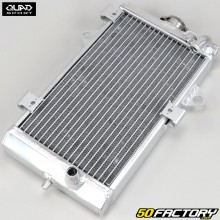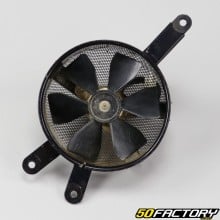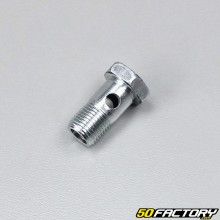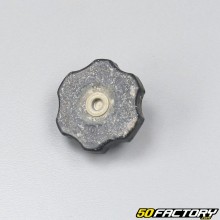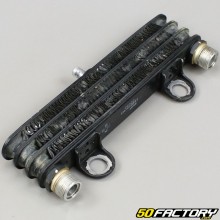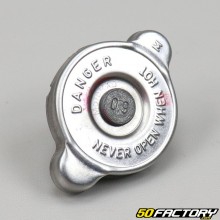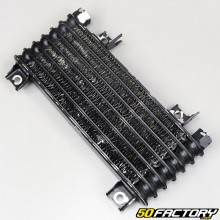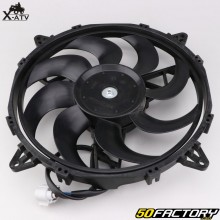 Radiator
Radiator
-
- IN STOCK160€50
-
-
-
-
- IN STOCK138€90
- IN STOCK138€90
- IN STOCK-28% 160,50 € 115€56
-
- IN STOCK138€90
- IN STOCK138€90
- IN STOCK138€90
- IN STOCK138€90
-
- IN STOCK138€90
-
- IN STOCK160€30
- IN STOCK49€90
- IN STOCK4€90
- IN STOCK14€90
- IN STOCK189€90
- IN STOCK45€90
- IN STOCK199€90
- IN STOCK139€90
- IN STOCK159€90
- IN STOCK139€90
-
Le radiator for quad is a central part of your ATV's cooling system. It plays a crucial role in regulating engine temperature, preventing overheating and ensuring optimum performance. In this article, we'll explore how ATV radiators work, why they're important, how to choose the right model, and tips on maintaining and relocating radiators.
Understanding the role of the radiator in a quad
How the cooling system works
The cooling system of a quad is designed to keep the engine at a stable temperature. The radiator is the heart of it, dissipating the heat generated byar the engine. When the engine is running, coolant circulates through the radiator where it is cooled byar ambient air before returning to the engine. This cycle helps maintain the engine temperature at an optimum level, ensuring efficient performance and increased longevity.
Importance of the radiator for the vehicle
A high-performance radiator is essential to prevent engine overheating, which can lead to serious and costly engine damage. Without a proper cooling system, the engine can overheat, causing a loss of power, premature wear of internal components, and potentially failure. Additionally, an efficient radiator helps regulate emissions, improve fuel economy, and reduce overall engine wear.
Choosing the right radiator
Choice depending on the quad model
It is crucial to choose a radiator that is compatible with the specific model of your ATV. Each ATV has different requirements in terms of size, cooling capacity and mounting compatibility. Par example, a radiator designed for a quad Yamaha may not be compatible with a quad Polaris. Always check the manufacturer's specifications and choose a radiator designed for your ATV model to ensure optimum performance.
Choice based on conditions of use
The choice of radiator should also take into account the conditions in which you use your quad. If you practice intensive off-road activities, opt for a radiator with a high cooling capacity, capable of handling extreme temperatures and difficult conditions. For more moderate use, a standard radiator may suffice. Also consider options for reinforced radiators or with additional fins for better heat dissipation.
Cooling system upgrade kits
Benefits of lift kits
Radiator riser kits allow the radiator to be positioned higher on the ATV, reducing the risk of radiator damage.ar mud, debris or impact. This riser also improves airflow around the radiator, increasing its cooling efficiency. In short, a riser kit can extend the life of your radiator and improve the cooling performance of your ATV.
Compatibility with different quad models
There are a variety of lift kits on the market, each designed to be compatible with specific models of ATVs. Be sure to choose a lift kit that matches your ATV's model. Lift kits often come with detailed instructions and all the necessary hardware for an easy and secure installation.
Cleaning and maintaining the cooling system
Tips for cleaning
Regular maintenance of your radiator is essential to ensure its proper functioning. Clean the radiator regularly by removing mud, dust and debris that can clog the cooling fins. Use a soft brush or a low-pressure water jet to avoid damaging the fins. Regular cleaning helps maintain optimal airflow around the radiator and prevents overheating.
Maintenance Tips
In addition to cleaning, check the coolant level regularly and top it up if necessary. Always use the type of coolant recommended for yourar your ATV manufacturer. Also inspect hoses and gaskets for leaks or wear. Regular, preventative maintenance will extend the life of your radiator and ensure optimum performance of your cooling system.
Relocation of the cooling device
Benefits of Relocation
Radiator relocation involves moving the radiator to a safer location on the ATV, often higher up or to the rear of the vehicle. This modification can provide several benefits, including better protection from physical damage and improved airflow for more efficient cooling. Relocation is especially beneficial for ATVs used in extreme conditions, where the risk of damage is higher.
Relocation procedure
Relocating the radiator requires mechanical skills and a good knowledge of your quad. Here are some general steps to follow:
- Disconnect the battery and drain the coolant.
- Remove the radiator from its original location by unscrewing the fixings and disconnecting the hoses.
- Install the relocation brackets provided with the relocation kit.
- Secure the radiator to its new location using the brackets.
- Reconnect the hoses and fill the system with coolant.
- Reconnect the battery and check that the cooling system is working properly.
It is recommended to follow the relocation kit manufacturer's specific instructions to ensure proper and secure installation.
Examples of cooling system designs
Radiators for sport quads
Sport ATVs require high-performance radiators that can handle intense riding conditions. High-capacity aluminum radiators are often preferred for their light weight and cooling efficiency.
Radiators for utility quads
Utility ATVs, used for heavy-duty tasks and on varied terrains, require robust and reliable radiators. Copper or reinforced aluminum radiators are ideal for these vehicles. They offer excellent corrosion resistance and high cooling capacity to handle intensive workloads. Brands like Kawasaki and Suzuki offer heavy duty radiators suitable for utility quads.
Radiators for recreational quads
Recreational quads, used mainly for occasional rides, can get by with standard radiators. However, it is always important to choose a good quality radiator to avoid overheating problems. Aluminum radiators with moderate cooling capacities are often sufficient for these quads. Brands like Yamaha and Honda offer reliable and affordable radiators for recreational ATVs.
Conclusion: The importance of choosing the right cooling device
Choosing the right radiator for your ATV is essential to ensure optimum performance and extend the life of your vehicle. Whether you use your ATV for sport, utility or leisure activities, there is a radiator to suit your needs. Remember to regularly maintain your radiator to ensure it is working properly and consider options such as radiator lift kits and relocation for added protection and efficiency. By following these tips, you can get the most out of your ATV while avoiding overheating issues and costly breakdowns.
Pour plus d'informations sur le engine cooling, consider consulting our guide
Remember to consult the other “Cooling” categories to find all your parts: cap, cooling hose, water pump, sensor and thermostat, radiator support and accessory, expansion tank







